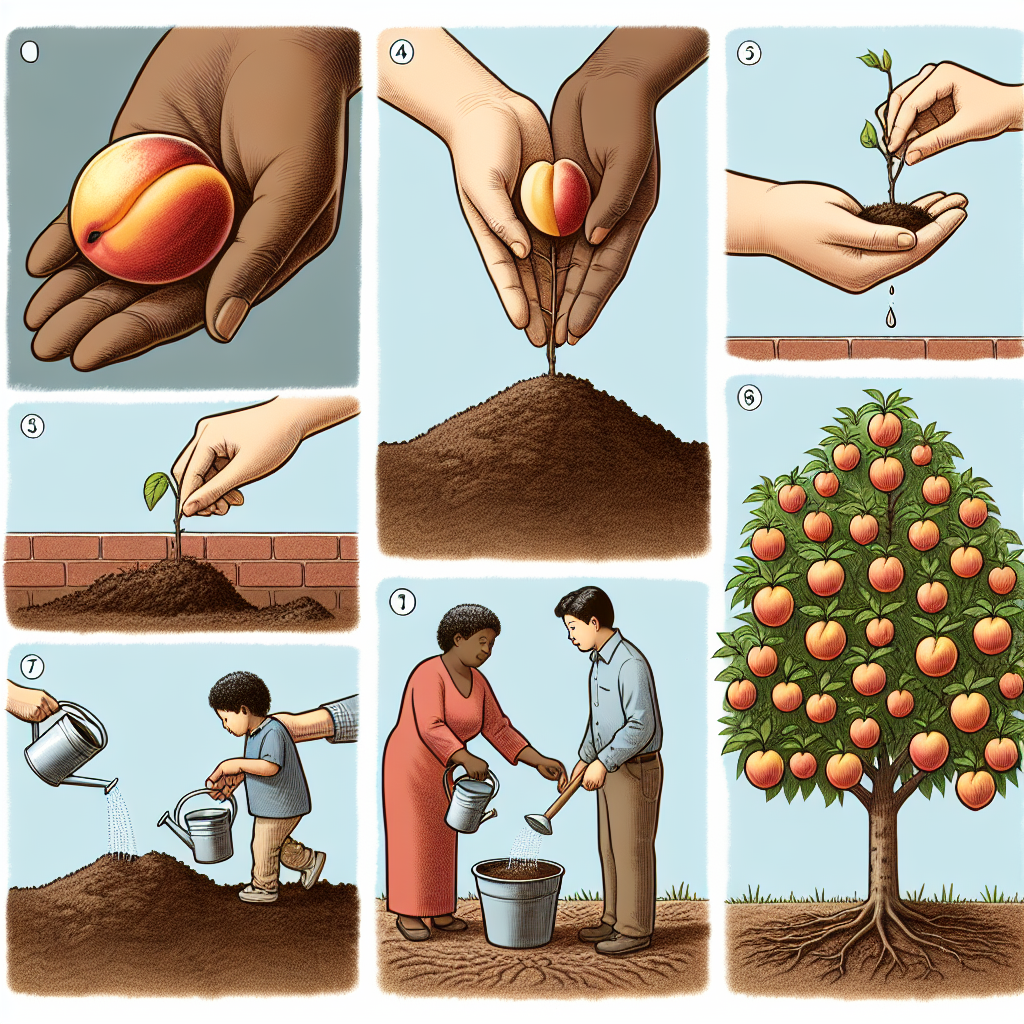
How to plant a nectarine seed
Introduction to Planting Nectarine Seeds
Nectarines are a delicious stone fruit that many people love to enjoy. While it's easy to buy nectarines from the store, growing your own can be a rewarding experience. If you're interested in cultivating this flavorful fruit, you might be wondering how to plant a nectarine seed. In this article, we’ll guide you through the steps to successfully grow a nectarine tree from seed, and we’ll share tips for ensuring your sapling thrives once planted.
Understanding Nectarine Seeds
Before diving into the planting process, it's important to understand what makes a nectarine seed unique. Nectarines belong to the same family as peaches and have similar characteristics. They are smooth-skinned fruits that offer a sweet, juicy flavor. When you plant a nectar seed, you're not just planting any seed; you're sowing the potential for a tree that can produce these delicious fruits in the future. Here are a few key points about nectarine seeds:
- Nectarine seeds require stratification.
- The growing process may take years before fruits appear.
- Climate and care greatly influence growth success.
Gathering What You Need
Before starting the planting journey, ensure you have all the necessary materials.
Essential Supplies
- Nectarine seeds (from a fresh, organic nectarine)
- Containers or seed trays
- Potting soil or seed-starting mix
- Plastic wrap or a humidity dome
- Watering can or spray bottle
- Garden space (or suitable pots for transplanting)
Steps to Planting a Nectarine Seed
Now, let’s break down the process of how to plant a nectarine seed step by step. Follow these guidelines to give your nectarine seeds the best chance of growing into healthy trees.
Harvesting the Seed
- Start with a fresh, ripe nectarine. Cut it open and remove the pit.
- Rinse the pit under water to remove any clingy fruit residues.
- Allow the pit to dry for a day before cracking it open. You’ll find the seed inside.
Stratification Process
Nectarine seeds need cold treatment, called stratification, to germinate properly. Here’s how to do it:
- Wrap the seeds in a damp paper towel.
- Place them inside a plastic bag to keep the moisture in.
- Put the bag in the refrigerator for about 6-8 weeks. Check occasionally to make sure the towel stays damp.
Preparing the Soil and Containers
While the seeds are undergoing stratification, prepare your containers and soil:
- Choose small pots or seed trays with drainage holes.
- Fill them with potting soil or a seed-starting mix.
- Moisten the soil lightly with water, ensuring it is damp but not soggy.
Planting the Seed
Once your seeds have undergone the cold treatment, it's time to plant them:
- Take the seeds out of the refrigerator.
- Using your finger, create a small hole in the soil approximately 1 inch deep.
- Place the seed inside the hole, then cover it with soil.
- Gently press down on the surface to eliminate air pockets.
Creating a Suitable Environment
Seeds require specific conditions to germinate. Here are some tips:
- Cover the containers with plastic wrap or a humidity dome to maintain humidity.
- Place the containers in a warm, sunny location—ideally, around 70°F to 75°F.
- Check the soil regularly; it should remain moist but not waterlogged.
Germination and Sprouting
In about 2 to 4 weeks, your seeds should begin to sprout. Here’s what to look for:
- Watch for small green shoots emerging from the soil.
- Once you see a sprout, remove the plastic wrap to allow for air circulation.
- Ensure the seedlings receive adequate sunlight, ideally 12-14 hours a day.
Caring for Your Seedlings
After successfully germinating your seeds, caring for the seedlings is crucial for their growth. Here are some pointers:
Watering
Maintain consistent moisture in the soil. Water the seedlings when the top inch of the soil feels dry. Always water gently to avoid disturbing the roots.
Fertilizing
Once the seedlings develop a few true leaves, you can introduce a diluted, balanced fertilizer. Fertilize every 4-6 weeks during the growing season.
Transplanting Outdoors
When the seedlings reach about 6 inches tall and the outdoor temperatures remain consistently above freezing, it’s time to think about transplanting them outdoors:
- Choose a location with full sun and well-drained soil.
- Dig a hole slightly larger than the root ball of your seedling.
- Carefully remove the seedling from its container, trying to keep the root ball intact.
- Place it in the hole, fill in with soil, and water well.
Long-Term Care for Nectarine Trees
After planting your seedlings in the garden, here are some long-term care tips:
Watering and Mulching
Regularly water your nectarine tree, especially during dry spells. Use mulch to retain moisture, suppress weeds, and regulate soil temperature.
Pruning and Training
To encourage healthy growth, prune your nectarine tree annually, removing any dead or crowded branches. This helps improve air circulation and leads to better fruit production.
Pest and Disease Management
Keep an eye out for pests and diseases by regularly inspecting your tree. Common issues include aphids and peach tree borers. Implement organic or chemical controls as necessary.
Conclusion
Growing a nectarine tree from seed can be a rewarding endeavor that takes patience and care. Following the necessary steps from harvesting the seed to planting it in your garden will yield not only a healthy tree but potentially delicious nectarines in a couple of years. By understanding how to plant a nectarine seed, you can take this journey and enjoy the fruits of your labor in the future. Happy gardening!
By Guest, Published on August 12th, 2024